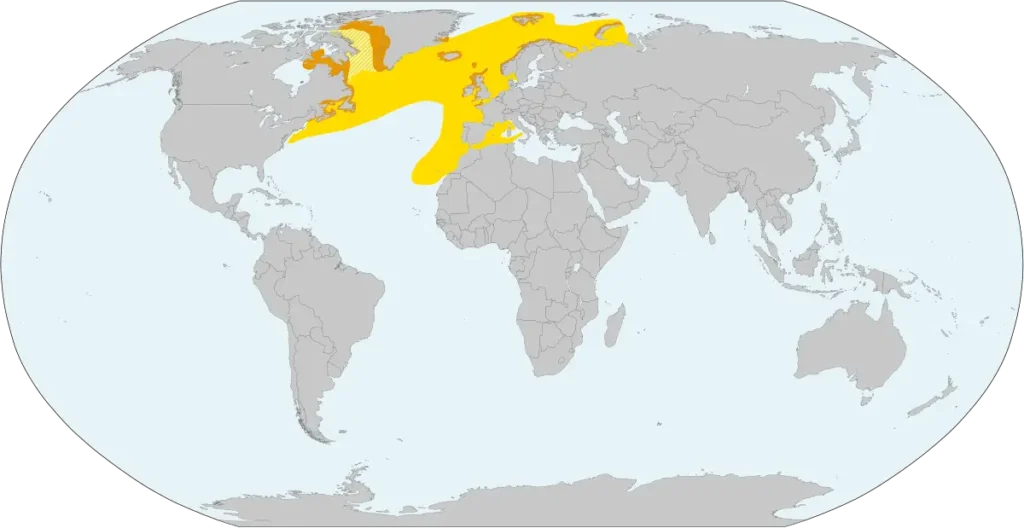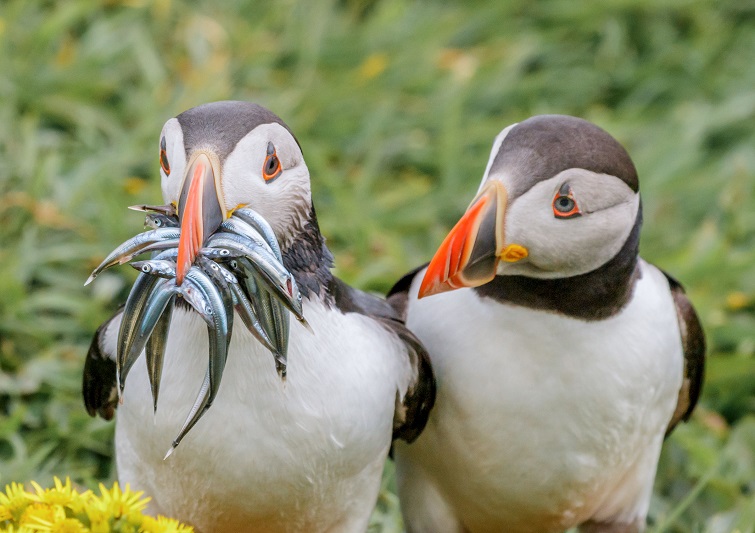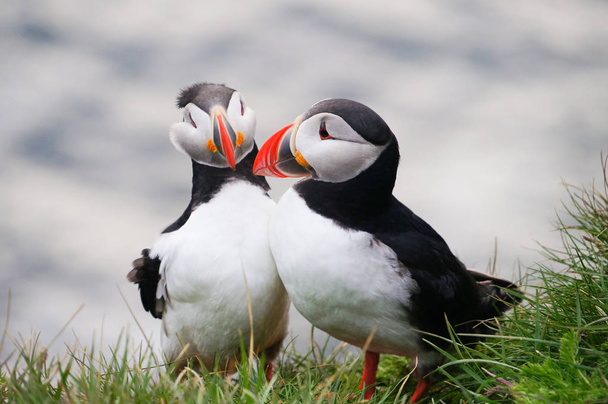Atlantic Dead End (Fratercula arctica)- one of the most recognizable seabirds due to its bright beak and funny appearance. This small creature, native to the harsh North Atlantic environment, is known for its impressive diving ability, social skills, and dedication to one partner for life.
It is also called "sea parrot” because of the colorful beak, especially bright during the breeding season. But beyond that, the bird is also a skilled hunter, an excellent swimmer, and an important part of the marine ecosystem. Let's take a closer look at all aspects of Atlantic cul-de-sac life.

1. scientific classification and types
🔹 Scientific classification:
✔ The Kingdom: Animals (Animalia)
✔ Type: Chordal (Chordata)
✔ Class: Birds (Aves)
✔ Row: Gray-haired (Charadriiformes)
✔ Family: Alcoves (Alcidae)
✔ Gender: Dead ends (Fratercula)
✔ View: Atlantic Dead End (Fratercula arctica)
🔹 Other types of dead ends:
✔ Pacific Dead End (Fratercula cirrhata)- known for its long feathery "eyebrows".
✔ Horned Dead End (Fratercula corniculata)- has horn-shaped outgrowths above the eyes.
The Atlantic puffin is the only puffin species found in the Atlantic Ocean, while the other two are distributed in the Pacific Ocean.
2. Appearance and dimensions
These birds have compact bodythat is adapted to life in the sea.
✔ Body lengthSize: 28-34 cm.
✔ WingspanSize : 50-60 cm.
✔ WeightWeight : 300-500 g.
🔹 Appearance features:
✔ Black back and white belly-a classic color that helps to disguise yourself in the water.
Bright beak red-orange in the breeding season.
✔ Short, strong wings that allow you to swim well under water.
✔ Orange webbed feet that help you maneuver in the water.
🔹 Interesting:
In autumn, the puffin's beak becomes less bright-it sheds and loses the top layer of the shell.
✔ Its beak shape allows you to carry several fish at the same time-a record is recorded at the wearing puffin 62 fish at a time!

3. habitat
🌍 Where does the Atlantic Puffin live?
Puffins are common in the northern Atlantic waters, from Iceland, Greenland, and the United Kingdom to the coasts of Canada and the United States.
✔ They nest on rocky islands and coasts with burrows for laying eggs.
✔ During the winter period spend 8 months on the high seas, without contact with land.
🔹 Largest colonies of Atlantic Puffins:
✔ Iceland-almost 60% of the world's population.
✔ Faroe Islands.
✔ The British Isles-particularly Shetland and Orkney.

4. Food and method of hunting
🍽 What do puffins eat?
✔ Small fish (herring, capelin, Gerbil).
✔ Crayfish, shrimp, and shellfish.
✔ Aquatic insects and plankton.
🔹 How do puffins hunt?
✔ They are they dive to a depth of 60 musing the wings as paddles.
✔ Can stay underwater for up to 1 minute.
✔ The special structure of the beak allows you to carry several fish at the same time.
🔹 Interesting:
✔ Dead ends can adjust the speed of flight to the strength of the wind – sometimes they accelerate to 88 km / h.
✔ They navigate the sea with the help of Earth's magnetic field.
5. reproduction and life cycle
🔹 Mating behavior
✔ Form pairs that are stored for life.
✔ To attract your partner's attention, perform ritual beak strikes "it's called a beak dance.
🔹 Nesting
✔ Dig up burrows up to 1 meter long in the soil or use natural crevices.
✔ Procrastinate one egg per year.
🔹 Feeding chicks
✔ Incubation continues 40 days.
✔ After hatching, the parents feed the chick up to 300 times a day.
✔ Via 6 weeks the baby leaves the nest and goes to sea on its own.

6. enemies and threats
🚨 Natural enemies
✔ Great Martins and skuas attack adult birds.
Foxes and martens can destroy egg clutches.
🌍 Top threats from humans
✔ Pollution of the oceans by oil and plastic.
✔ Overfishing, which reduces the amount of food for puffins.
✔ Climate change affecting their range.
🔹 Population size:
✔ Current number of dead ends decreases.
✔ The species is considered vulnerable in many regions.
7. Interesting facts about Atlantic Cul-de-sac
✔ "Flying Potato " "that's what puffins are called because of their clumsy flight.
✔ They are they spend more time at sea than on land.
✔ Have excellent memory - they can return to the same nest for years.
✔ Small dead ends are called "pavsi" (puffling).
✔ Puffin colonies include tens of thousands individuals!
Conclusion
The Atlantic Puffin is an incredible seabird that has adapted to life in the open ocean and on rocky coasts. Despite all the difficulties, this species continues to amaze with its endurance, dedication to the family and ability to survive in the harshest conditions.
These "sea parrots" are a real miracle of nature!